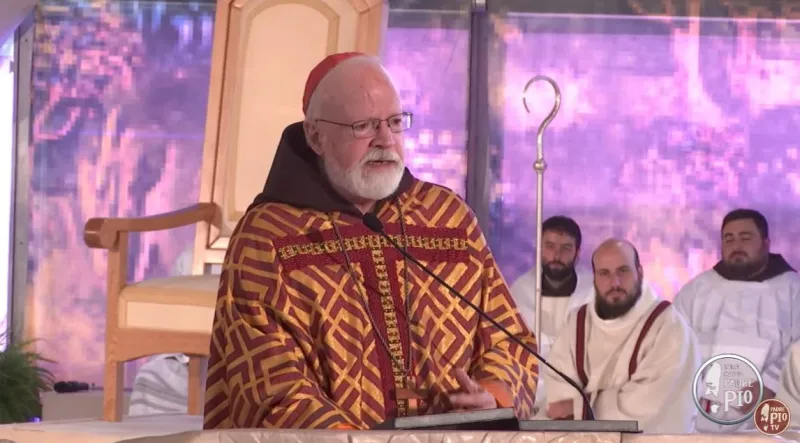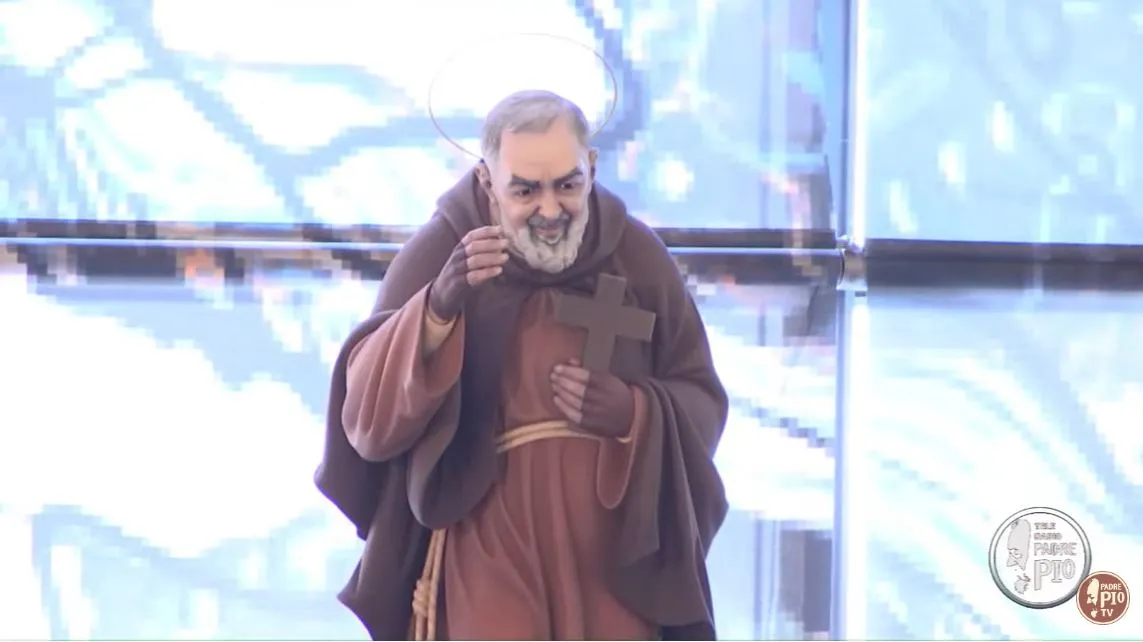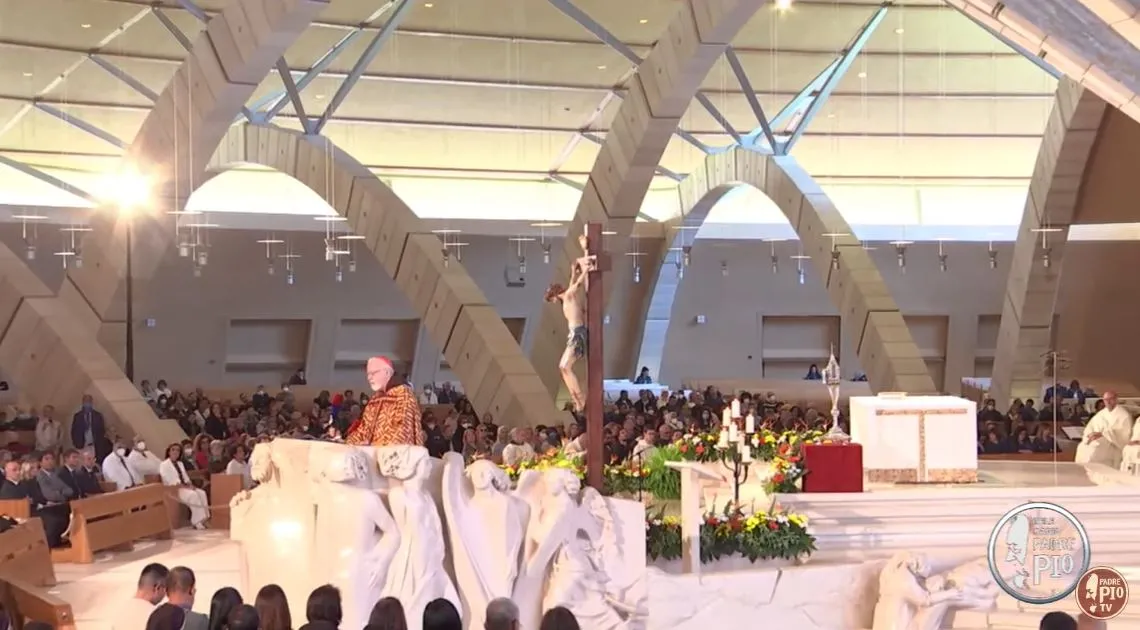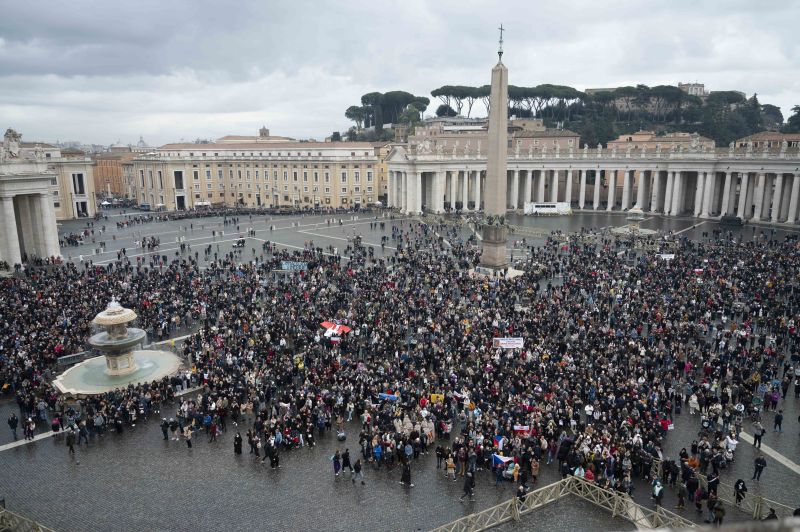
Vatican City, Nov 29, 2021 / 04:37 am (CNA).
For the second year in a row, Pope Francis has canceled the Roman tradition of a public gathering at the Spanish Steps on Dec. 8 to venerate a statue of the Immaculate Conception due to the COVID-19 pandemic.
The Holy See press office announced on Nov. 27 that instead of the usual outdoor public ceremony, the pope will instead perform a private act of devotion to Our Lady to avoid the formation of a crowd and the risk of spreading the coronavirus.
The pope will ask the Virgin Mary in prayer “to protect the Romans, the city in which they live, and the sick who need Her maternal protection everywhere in the world,” the statement said.
The announcement came after the Italian government unveiled further COVID-19 restrictions entering into force on Dec. 6.
Under the new restrictions, unvaccinated people in Italy will be unable to dine indoors at restaurants, go to the gym, visit museums and other tourist sites, or attend weddings or other public ceremonies until at least Jan. 15.
Last year, Pope Francis made a surprise visit to pray alone at the Immaculate Conception statue in the Piazza di Spagna at 7 a.m. on the Solemnity of the Immaculate Conception of the Blessed Virgin Mary after the traditional public gathering was canceled.
The pope laid a bouquet of white roses at the base of the nearly 40-foot high column which holds the statue of the Immaculate Conception near the Spanish Steps.

The statue was dedicated on Dec. 8, 1857, three years after Pope Pius IX promulgated a decree defining the dogma of the Immaculate Conception of Mary.
Since 1953, it has been a custom for popes to venerate the statue on the feast day. Pius XII was the first to do so, walking nearly two miles from the Vatican.
Rome’s firefighters are usually in attendance at the prayer, in honor of their role at the 1857 inauguration of the statue. The mayor of Rome and other officials also attend.
In addition to Pope Francis’ surprise visit to the statue last year, the pope also visited the Basilica of St. Mary Major, where he prayed before the icon of Salus Populi Romani, Mary Protection of the Roman People.
The pope also offered Mass in the basilica’s Chapel of Nativity, before returning to the Vatican.
Pope Francis is scheduled to preside over several public liturgies in December, including Mass at 7:30 p.m. on Dec. 24 and the Urbi et Orbi blessing in St. Peter’s Square on Dec. 25 at noon.
If you value the news and views Catholic World Report provides, please consider donating to support our efforts. Your contribution will help us continue to make CWR available to all readers worldwide for free, without a subscription. Thank you for your generosity!
Click here for more information on donating to CWR. Click here to sign up for our newsletter.









Once again the faithful are asked to suffer the cancellation of public demonstration of homage to Our Lady. This recalls last year’s locking of Church doors and dispensations at Mass because of its non-essential nature. Is it any wonder that no faith is fast disappearing under the rod of such activity?
Scripture warns against a fear of material. Scripture and seeks to rather provoke fear of the eternal spiritual. (Matthew 10:28) Perennial Magisterial teaching on virtue speaks to courage and hope; where are these demonstrable in Francis? Francis chooses to travel alone with carriers of uncleanliness banned from his path. Rather should we seek and see Our Lord who sacrificed His Holy Humanity so sinners could be cleansed and made like Him.
If avoiding Covid is the reason, why didn’t he cancel the Pachamama worship in St. Peter’s?
The Pope did not have to do what you suggest here because there was the Pachamama icon was never worshipped at the Vatican. It is a lie that is still being spread by those who hate our Pope.
He had his MC place the ceremonial bowl of dirt, which specifically symbolizes Pachamama, an Idol, on St. Peter’s altar at the offertory, where it remained throughout the Holy Sacrifice of the Mass. And shortly after that, public Mass was canceled throughout the world and most all the Catholic churches in the whole world shut down for months, unprecedented in the history of the Church. Also it was most assuredly worshipped in the Vatican gardens, by a large circle of individuals including two Franciscans bowed their foreheads down to the ground before the idol.
People in different parts of the world show their respect in different ways. Why should everything be done in the western way, Europeans way that we are so used to. Pagan Romans used to genuflect and Catholics adopted that pagan custom. We place wedding rings on the altar.
It was clearly declared by the Pope that there was no worship. I believe him.
It is extremely curious how hypocritical and contradictory some people can be!
I know a person who tends to idolize Francis as a pope beyond criticism. Yet that same person finds a problem with Eastern Catholic Churches, in communion with the pope and with the Universal Church, simply because those Eastern Churches do not hang upon Francis’ every last word and remain aloof from embroiling RCC controversies.
Now that same person sees no problem with inculturating pagan customs and idols to Roman Catholicism simply because the pope has done so.
I leave you now to go get a grip. Good night and good day.
Mal, I am from Africa and I attend Mass with African Catholics every Sunday. I can tell you with certainty that the worship of a Demon Fertility Idol would never be allowed here. Inculturation here means, at most, using traditional African musical instruments and dress (the laity, not the Priest); it does not involve any change in worship or the sacraments.
What Francis did in 2019 is despicable, and the Covid epidemic is the Divine Punishment for it. Francis needs to atone for his violation of the 1st Commandment in sackcloth and ashes.
Interestingly, Covid spread to Italy AFTER the Pachamamas were honored, blessed, and brought into Vatican cathedrals. One could say the Pachamama idol worship led to God’s allowing Covid.
https://www.lifesitenews.com/news/ewtns-fr-mitch-pacwa-condemns-pachamama-worship-at-amazon-synod/
meiron, many years ago I walked into a classroom and on a wall I saw a picture placed quite prominently. The students told me that that was a picture of Jesus. However, I knew that it was not. It was a photograph of Jeffrey Hunter, the actor who had played Jesus. I wonder how many people prayed to pictures like that? And many more? All pictures, paintings of human beings and sold to us as Jesus.
I often wonder how our practices would have been if the Church had remained in Israel instead of moving to Greece and Rome which had icons of Gods.
What is your point?
Such comments seem to some as coming from the dark side of the moon. Catholics do not pray to pictures.
(Although, there’s the tale of a Protestant minister complaining to a priest that such is so; and the post Vatican II priest retorted that, no, we do not pray to statutes or pictures, we pray to banners!)
As for St. Paul and the Church crossing over to Macedonia and then to Athens, this is the Providential reason that truths of the self-revealing God can be expressed, however finitely, in the conceptual language of “reason” and “persons” and the “one and the many.” Part of the early Councils dealing with the Trinity, the three Persons of the Trinity in One God, and the two natures of Christ in one Person.
The revealed Faith–more than a religion–went the direction of analogous human reason (analogous to the interior mystery of God), rather than in the other direction of symbols which account for the many mystery religions that flourished in the late Roman Empire. Even the Jews did not remain in Israel, but dispersed into the Diaspora following the destruction of the Temple in 70 A.D.
In short, the Catholic Church is in history, but not of history, founded by Christ and indwelled by the Holy Spirit.
Yes, it is true that we Catholics do not worship pictures and icons, however, they are blessed and considered holy. So, why would you still persist in Protestant style accusing the Pope of worshipping an icon which represents the motherness of earth to the Amazonian Catholics? And still deliberately confusing it with the Andean (not Amazonian) pagan goddess which looks completely different. The icon was erroneously called Pachamama but this is not what the Amazonian Catholics call it.
Pope Francis, a very faithful Catholic, who is devoted to our Lady knows very well the difference between worshipping God and venerating our Lady and the saints. The so-called Pachamama in question, represents the life-sustaining gifts from God that are made available to us in and through the earth. They show their gratitude in this way because, unlike us “civilized” people, they live off the earth. We have our cars, wedding rings, and houses blessed. Just different.
Wikipedia seems to know more than some Catholics about what the Pachamamma idol represents. It has nothing to offer Catholicism. It contradicts Catholicism. There is a diabolical disorientation within those who cannot see.
“Pachamama is a goddess revered by the indigenous peoples of the Andes. In Inca mythology she is an “Earth Mother” type goddess,[1] and a fertility goddess who presides over planting and harvesting, embodies the mountains, and causes earthquakes. She is also an ever-present and independent deity who has her own creative power to sustain life on this earth.”
There is a presentation on Pachamama by Fr. Mitch Pawca on YouTube titled “Fr. Mitch Pawca on Pachamama idol worship”:
*
https://www.youtube.com/watch?v=VHCxjaWUZTg
*
He said that the people of the Andes place Pachamama above Jesus and Mary.
S meiron, why did the other countries – India, Indonesia etc – get Covid. They did not have anything to do with the icons. Faulty reasoning from a website that does spread such falsehood.
“The pope will ask the Virgin Mary in prayer “to protect the Romans, the city in which they live, and the sick who need Her maternal protection everywhere in the world,” the statement said.”
This is the beautiful message that should warm our hearts. Pope Francis has always been devoted to our Lady, who would appreciate the continuation of this devotion in a manner that accommodates the sacredness of the occasion and the physical wellbeing of the people. Mary, who was concerned about the lack of wine at a wedding, will be equally concerned about the devastating effects of the virus. Well, that’s the Mother that I know.